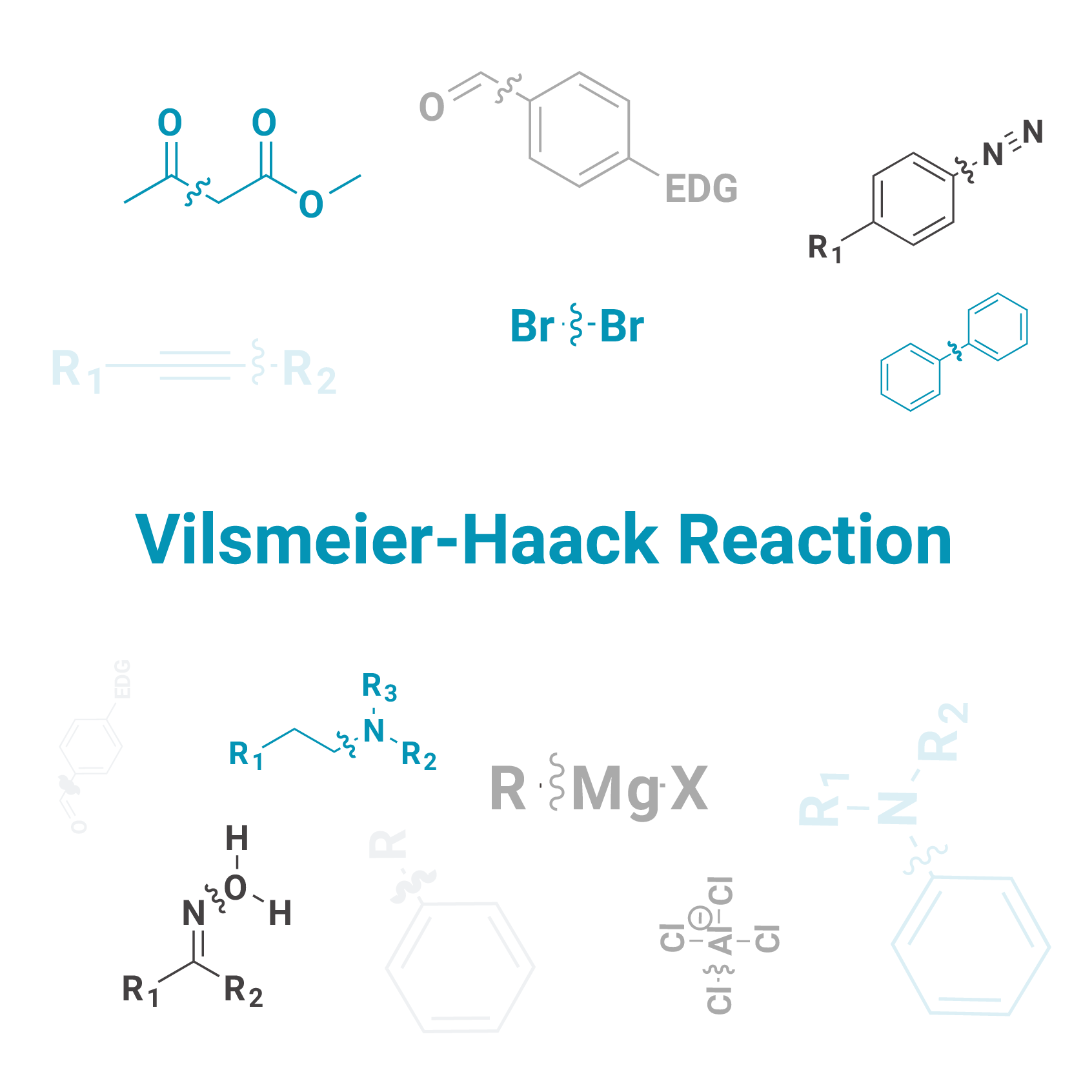The Staudinger reaction uses a trivalent phosphorous compound such as triphenylphosphine, an organic azide, and water to make a primary amine. Triphenylphosphine first attacks the terminal nitrogen of the azide, creating a phosphazide intermediate, which undergoes a rearrangement to release nitrogen gas and form an iminophosphorane intermediate (also known as...

The Stille cross-coupling reaction uses a palladium catalyst to couple an organohalide and an organostannane. The mechanism follows the expected oxidative addition-reductive elimination. Reagents: Catalytic Palladium (Pd(PPh3)4, Pd(dba)2, etc.) Reactant: Organohalide, Organostannane Product: Coupled Product Type of Reaction: C-C Cross-Coupling Lab Tips Organostannanes are easy to work with as they...

The Strecker amino acid synthesis generates an α-amino acid from hydrogen cyanide, water, an aldehyde or ketone, and a 1° amine or ammonia. The carbonyl compound is first converted to an iminium ion, which is attacked by the cyanide ion to form an α-amino nitrile intermediate. Hydrolysis of the nitrile...

The oxidation of 1° and 2° alcohols to the corresponding aldehyde or ketone, using DMSO and oxalyl chloride is known as the Swern oxidation. First DMSO is activated by oxalyl chloride, releasing CO and CO2 gas to make a chlorosulfonium salt. The alcohol then attacks the chlorosulfonium salt and deprotonation...

The Ullmann reaction uses copper metal to convert aryl halides to biaryl compounds. The mechanism is not yet fully understood, but there are two theories in consideration. The radical mechanism involves a single electron transfer (SET) to form aryl radicals that combine to produce the biaryl product. The second mechanism...

The Vilsmeier-Haack reaction or Vilsmeier-Haack formylation uses DMF, phosphoryl chloride (POCl3), and water to convert an electron-rich arene to a substituted benzaldehyde. First, DMF and phosphoryl chloride form an iminium salt called the “Vilsmeier reagent”. Then the aromatic compound attacks the Vilsmeier reagent, disturbing its aromaticity. Deprotonation by DMF restores...

